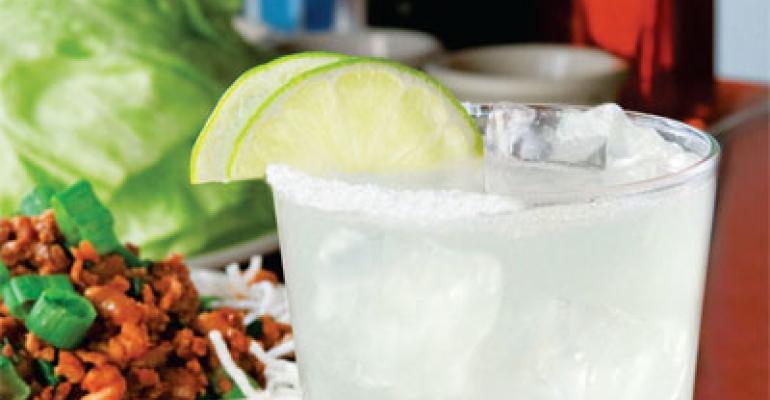As the restaurant industry gradually struggles out of the long, damaging downturn, alcoholic beverage sales also appear to be trending upward.
While alcoholic beverages have long been a reliable tool for operators to maximize sales and profits, restaurants are pioneering new ways to showcase drinks that offer a fuller, more satisfying dining experience for their guests.
Savvy bartenders and mixologists are employing new and innovative techniques and ingredients, like making their own bitters or exploring new spirit categories such as moonshine.
For example, casual-dining chain Z’Tejas Southwest Grill in Scottsdale, Ariz., introduced seasonal cocktails and a lower-calorie Skinny Margarita sweetened with agave nectar, while Cheeseburger in Paradise debuted upscale reposado tequila in a premium-priced promotional cocktail.
In the meantime, experts are predicting that alcoholic beverage sales at restaurants will rise this year. Technomic, the Chicago-based research firm, said last month that alcohol sales at restaurants and bars were projected to rise 1.9 percent in 2011. That figure comes on the heels of Technomic’s projections last summer that sales through the end of 2010 would increase 1.1 percent. At the end of 2009, the firm had anticipated a decline of 2.5 percent in alcohol sales for 2010.
The Distilled Spirits Council in its industry review, “A Decade of Progress,” said while it had seen the market for spirits stall during the recession, it also anticipated that sales of spirits would increase in 2010.
In addition, Technomic predicted that an increasing number of restaurant concepts would turn to alcohol as a way of differentiating themselves.
In the last 10 to 15 years, higher-quality drinks have become a larger part of the overall dining experience, said Eben Klemm, senior manager, wine and spirits for New York City-based multiunit operator BR Guest Hospitality.
“I think if there’s anything that we’ve learned — or the guest has learned — it’s that there’s a difference in [quality] drinks,” Klemm said.
In 2010, casual-dining chains tried to rise above the downturn and maximize sales by promoting alcoholic beverages during happy hour. Some, such as P.F. Chang’s China Bistro and Maggiano’s Little Italy, also pushed the envelope by merchandising private-label wines.
P.F. Chang’s introduced a Sauvignon Blanc and a Syrah blend under the label Vineyard 518 in April. Mary Melton, beverage director for the Scottsdale, Ariz.-based P.F. Chang’s, said the newly introduced red and white wines complemented the chain’s food selections.
“We wanted to offer quality wine [at] a great price,” Melton said, adding, “The wines are packed in a bag and a box in order to reduce costs, ensure freshness and be eco-friendly.”
P.F. Chang’s offers quality selections for a range of drinks, Melton continued, “from wine, beer, spirits, sake to our teas.” All beverages account for 13.2 percent of sales at the chain.
While P.F. Chang’s is known for its cocktail program, which uses freshly squeezed ingredients and offers classic cocktail-inspired drinks, the brand also sells a lot of craft beers, and the percentage is growing, Melton said.
Offering a diverse selection has proven to be a way for operators to further differentiate themselves in a crowded market. For example, AMC Entertainment plans to upgrade food and beverage service in its cinemas with a bar-lounge called MacGuffins, which will serve local beers and drinks.
Klemm said operators who want to create drinks for mainstream restaurants must understand how to strike a balance between offering experimental beverages and giving guests what they’re familiar with.
“I try to get close to that with about 5 to 10 percent of menus having interesting things or a little bit of weirdness or unexpectedness,” he said.
“I think it’s interesting that what you’re seeing in mainstream places is … not seeing a huge, radical change,” Klemm said. “What you are seeing is a change in quality.”




